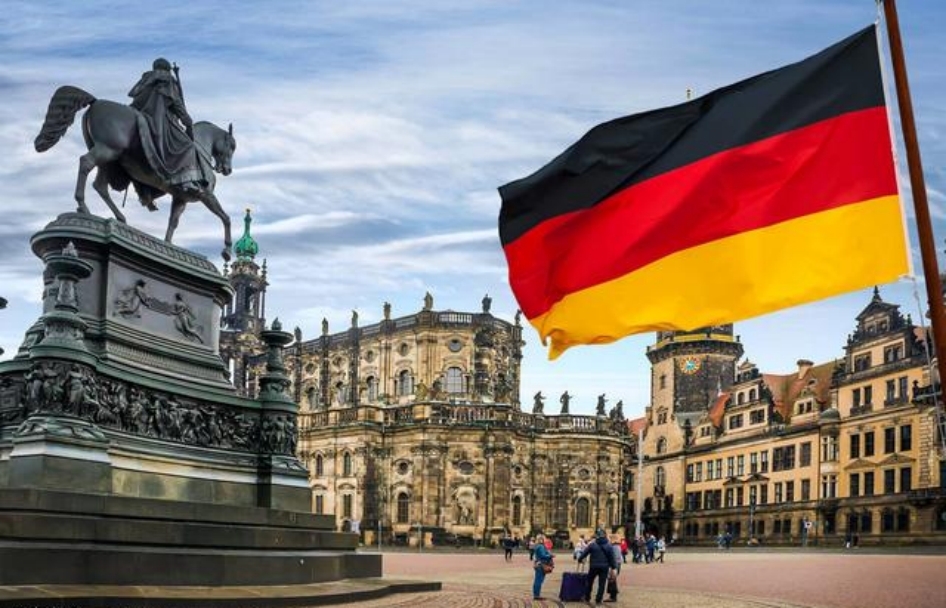
Recently, the Federal Presidency of Germany witnessed a historic moment, President Steinmeier officially signed the document terminating the powers of the Scholz Cabinet, marking the end of the 20th government. At the same time, the new parliament elected Klokner as the speaker, this regime change is not only the transfer of power in the political arena, but also the inevitable result of the triple crisis of economic stagnation, political fragmentation and diplomatic difficulties in Germany.
The German economy, once a system known for its robustness, is now experiencing its longest contraction since World War II. Official data show that Germany's GDP growth has been negative between 2023 and 2024, and the growth rate in 2025 is expected to barely reach 0.2%. Behind this data, the manufacturing industry has suffered multiple blows. The collapse in global demand led to an 18% plunge in industrial orders, dealing a blow to Germany's export-dependent economy. At the same time, the introduction of the US Inflation Reduction Act has posed a potential threat to Germany and other European countries, especially the 10% punitive tariffs involved, which will undoubtedly exacerbate the competitive disadvantage of German products in the US market.
In response to the crisis, the German government had to activate a special fund of up to 500 billion euros to stimulate the economy and temporarily suspend the "debt brake" mechanism stipulated in the constitution. But will this really save the German economy? The answer may not be good. The Munchen Institute for Economic Research warns that interest rates on government bonds are already at 3.7%, which means that annual interest payments on new debt will take up 8% of the budget. If the recovery continues to be weak, Germany's debt-to-GDP ratio is likely to break the warning line of 90% by 2030, which is undoubtedly a worrying prospect.
The knock-on effects brought about by the economic recession, the first is the unrest in the field of people's livelihood. The surge in the food price index, which recorded the biggest increase since 1981, has undoubtedly exacerbated the pressure on people's lives. The collapse in support for the Social Democrats and the rise of the far-right Alternative party reflect discontent and frustration with the current state of the economy. The AfD's electoral base in the industrial east has exceeded 35 per cent, and it is worth pondering the social divisions and economic discontent that lie behind this figure.
More seriously, the position of Germany's traditional grand coalition parties (CDU/CSU + SPD) in power is in jeopardy. Its combined share of seats has shrunk from 90% in its heyday to 45% today, and the coalition's barely majority is stretched thin in the face of economic hardship. The deadlock in coalition negotiations and the paralysis of policymaking have highlighted the inability of the German political system to cope with the economic crisis. Especially on the focus of fiscal reform, the debt ceiling bill proposed by the League party has been boycotted by the Green Party, the Left Party and the Alternative Party, and the Constitutional Court has accepted several lawsuits against the relaxation of debt restrictions, which has made policy in an unprecedented predicament.
In economic diplomacy, Germany also faces a dilemma. On the one hand, the US Biden administration plans to impose 25% tariffs on EU steel and aluminum products, which will directly affect German exports of up to 28 billion euros. On the other hand, Germany's predicament in energy transition has become increasingly prominent. The proposal to restart the nuclear programme, which would go some way towards alleviating energy shortages, is strongly opposed by the Green Party. At the same time, the continued shortage of pipeline gas supply from Russia also makes Germany's energy security face serious challenges.
The decline in the competitiveness of Germany's manufacturing sector has cast a shadow over its economic recovery. The German manufacturing competitiveness index has fallen from 92 points in 2015 to 78 today, according to research by DIW, a German think tank. Behind this data, Germany is facing the pressure of industrial upgrading and transformation in the context of globalization. Although the Merz team proposed a "new industrialization strategy," including 20 billion euros in semiconductor subsidies and tax credits, the plan was questioned by the Finance Ministry and its fiscal sustainability was controversial.
In addition, the aggravation of contradictions within the European Union has also added uncertainty to the German economic recovery. France's insistence on promoting a "Europe first" industrial policy is in direct conflict with Germany's free trade claims. Calls from eastern European countries for Germany to shoulder more defense spending and opposition to austerity in southern European countries have complicated Germany's position within the European Union.
To sum up, the difficulties facing the German economy will not be solved overnight. Its economic contraction, people's livelihood instability, political fragmentation and diplomatic difficulties are intertwined, forming a complex problem. Especially in the context of the rapid development of globalization and digitalization, it will be a long-term and arduous task for Germany to balance various interests at home and abroad while maintaining its own economic competitiveness. It remains to be seen whether Germany can emerge from its current predicament and regain its position as the engine of Europe. However, this round of crisis in the German economy has provided us with a profound lesson: in the tide of globalization, no country can be immune, and only by strengthening international cooperation and coordination can we jointly cope with various challenges and risks.

The European Commission released a package of measures for the automotive industry on Tuesday (December 16th), proposing to relax the requirements related to the "ban on the sale of fuel vehicles" by 2035.
The European Commission released a package of measures for …
Venezuela's Vice President and Oil Minister Rodriguez said …
On December 16 local time, the Ministry of Space Science Ex…
Recently, a highly anticipated phone call between the defen…
Right now, the world's major central banks are standing at …
Recently, according to Xinhua News Agency, the news of a tr…